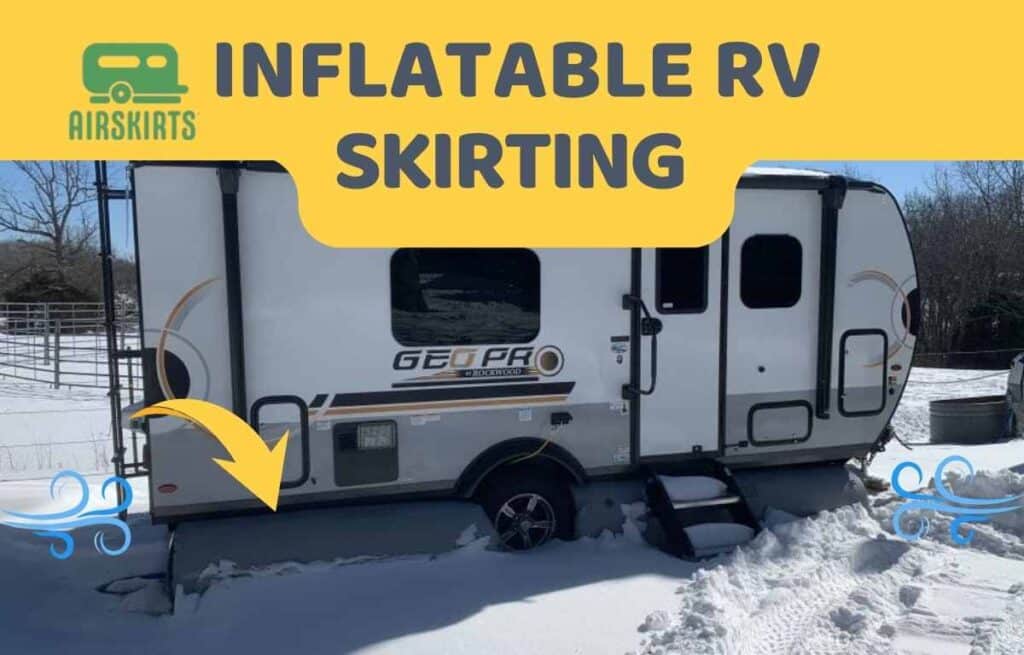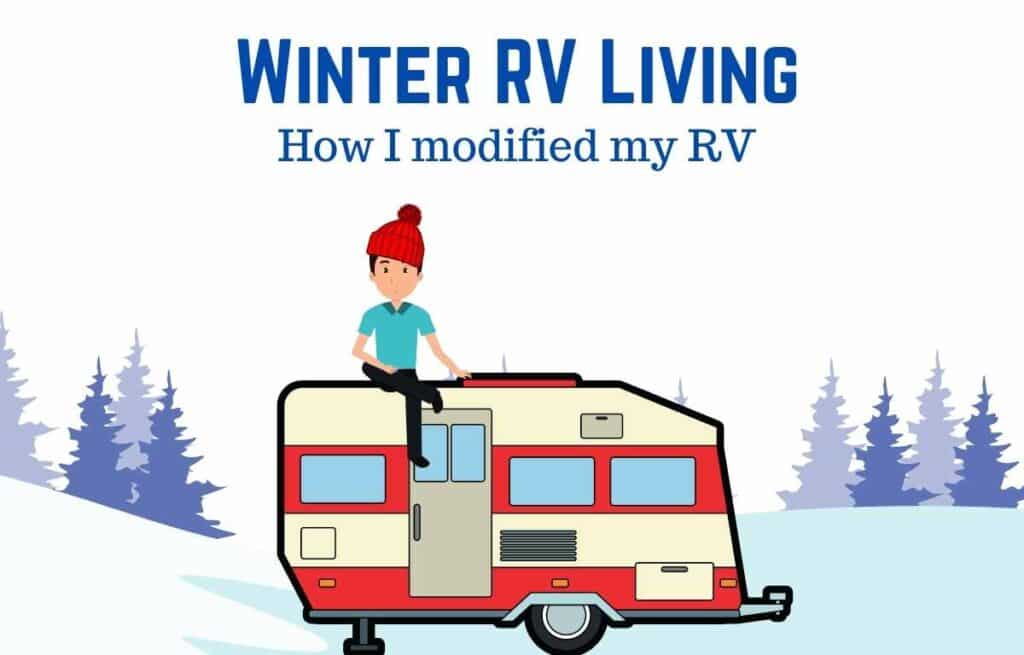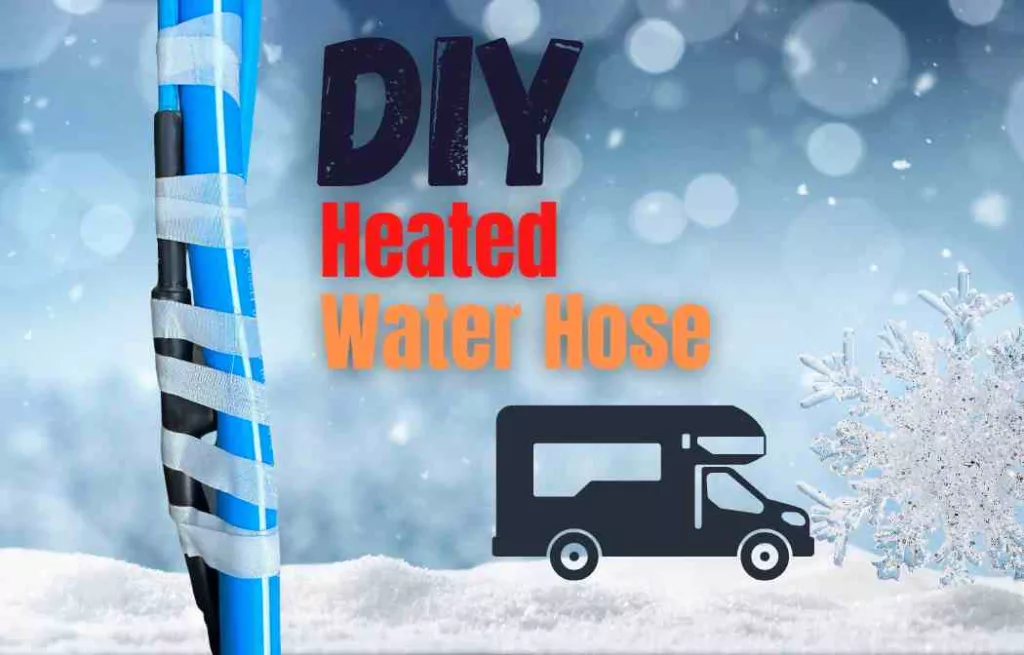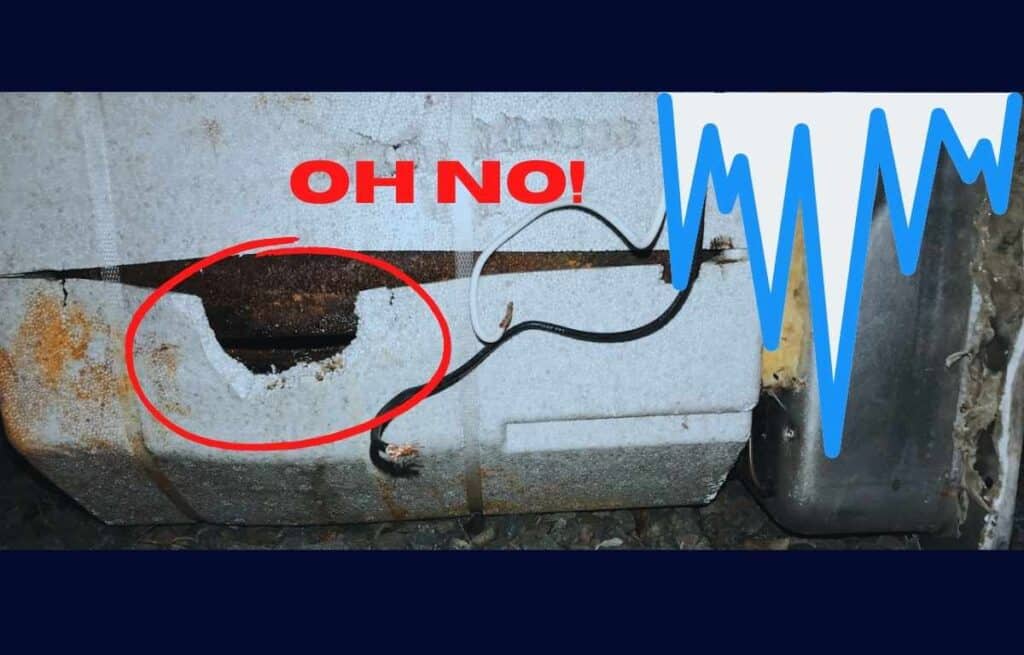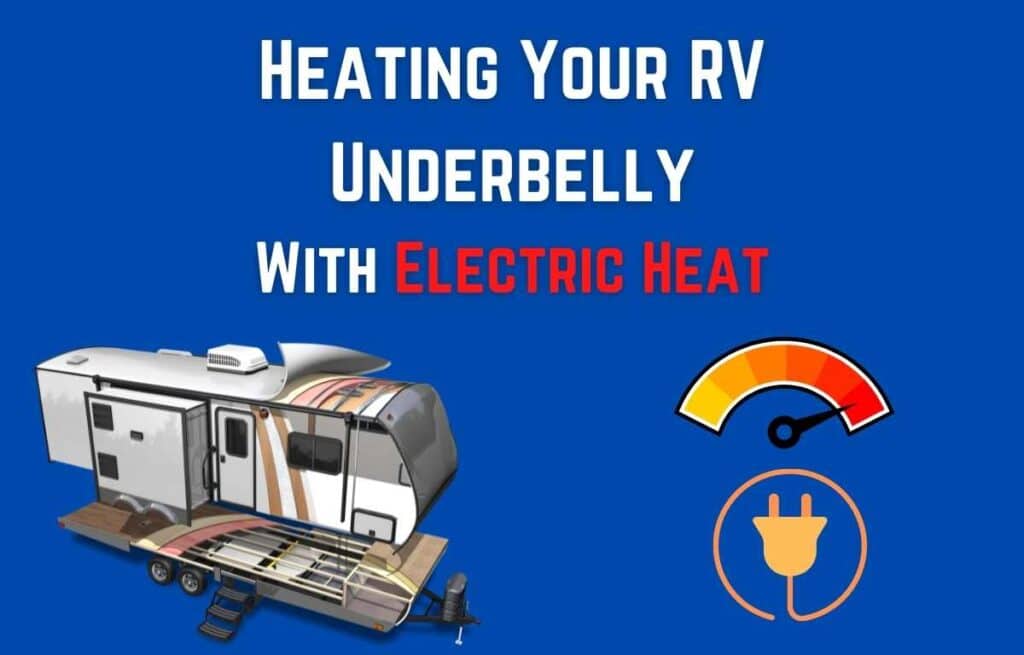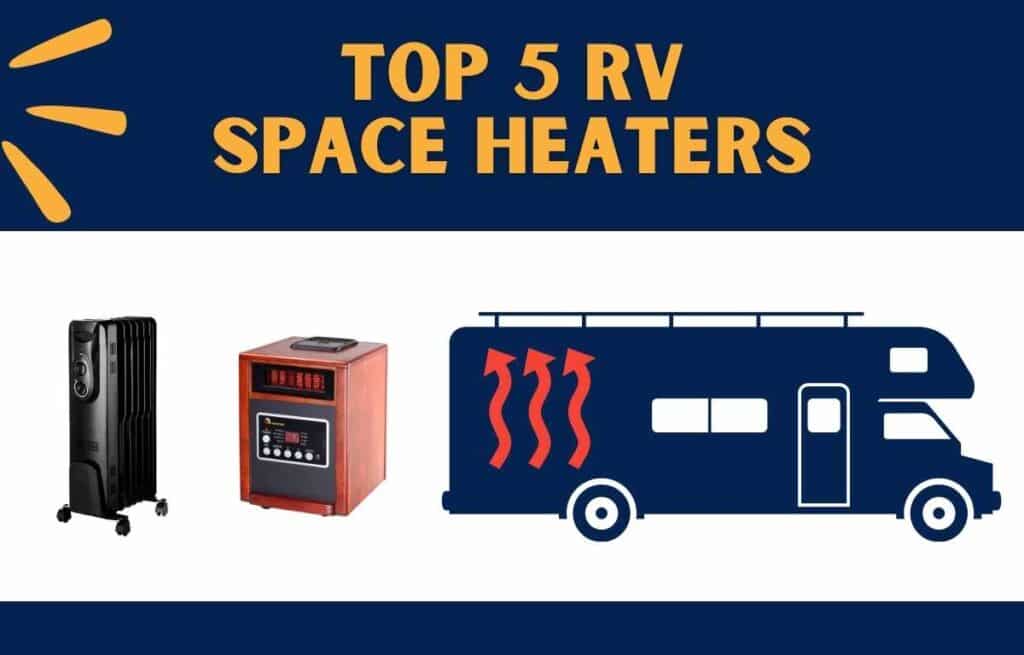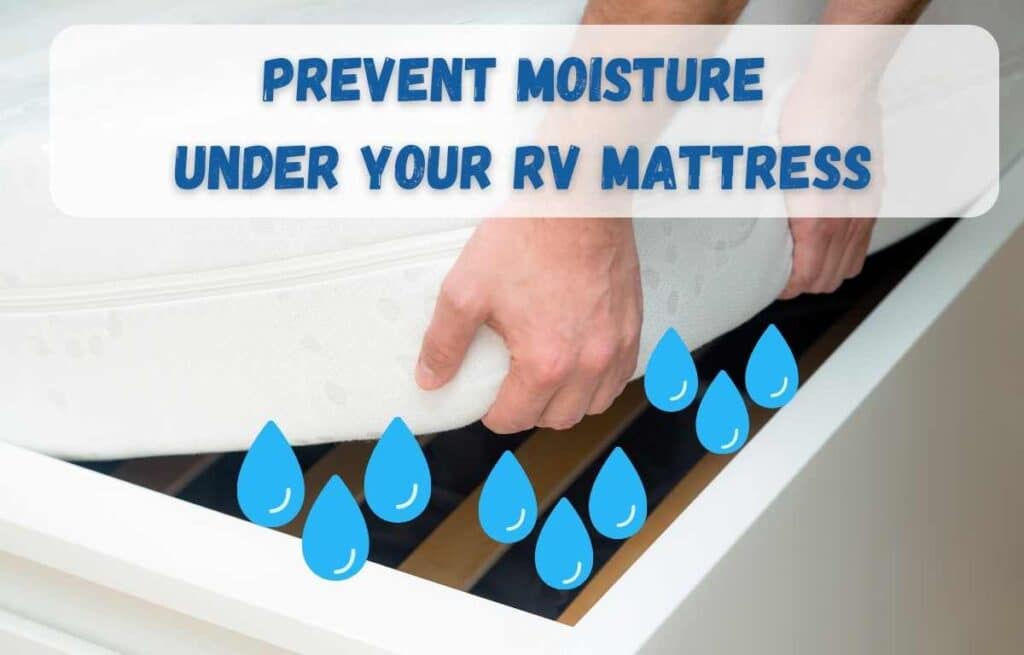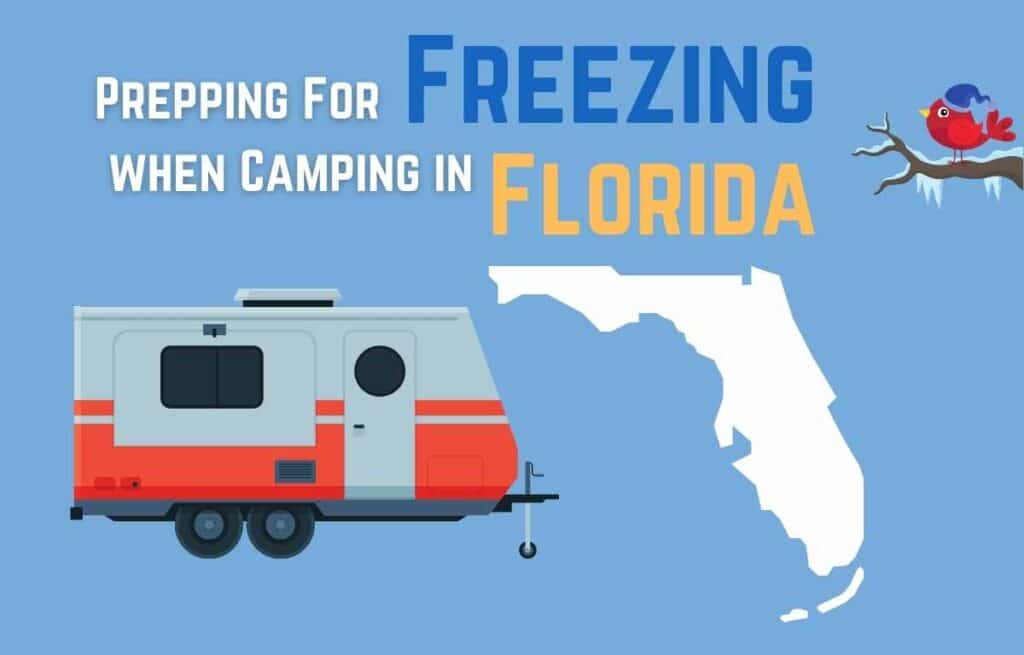Living in an RV during the winter can be challenging, but it is very doable. If you find yourself living in an RV by necessity or simply because you enjoy winter camping, there are certain things you can do to make it easier. You not only need to stay warm and comfortable, but you also need to protect your RV from the cold weather.
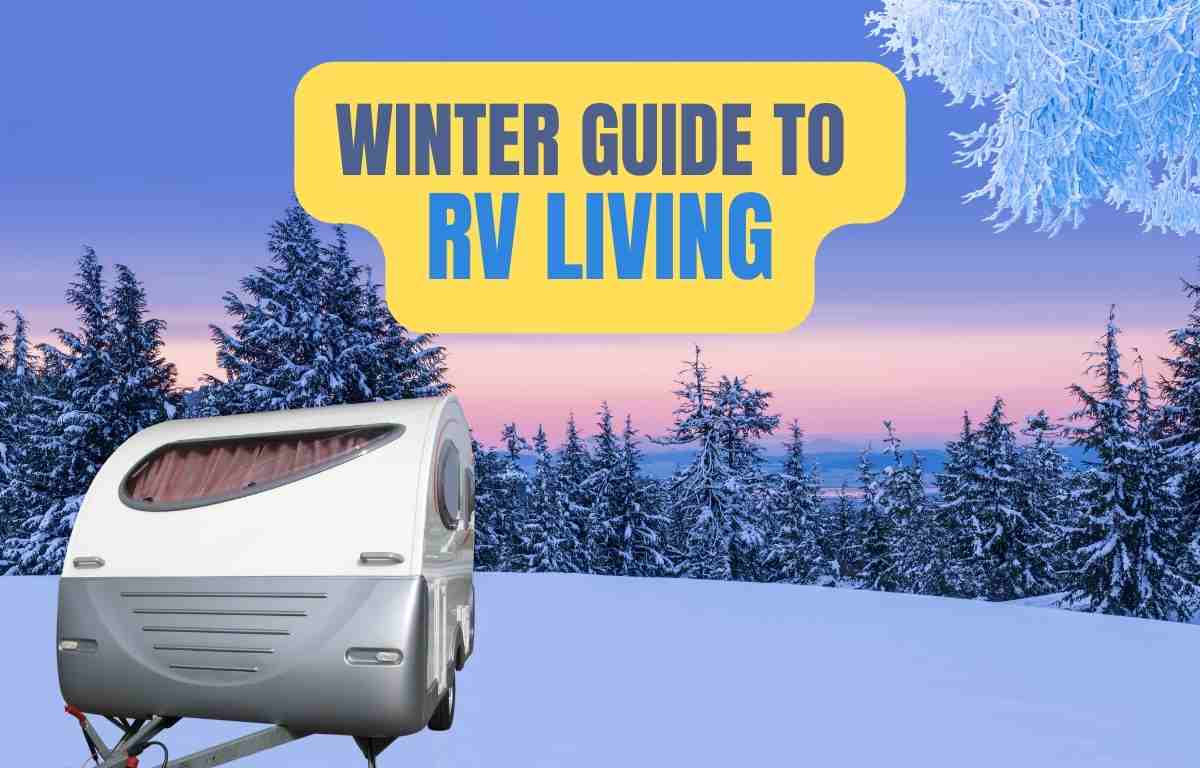
The following information is shared from first-hand experience. I spent three winters in the Northeast living in an RV, with temperatures frequently staying in the single digits. At first, it was more challenging, but after implementing many of the tips I’ll share below, it was enjoyable and affordable. Below, you’ll find access to dozens of articles I wrote on living comfortably in your RV during the winter.
Over the year, we at Outdoor Miles have compiled a list of great articles to help you enjoy living in your RV during the cold winter months. Each article provides detailed tips for prepping your RV for winter living and ideas for staying warm and saving money during the coldest days of the year.
Winter RV living doesn’t need to be complicated. Your main concerns will be staying warm and keeping your RV essentials operational. This includes protecting your vulnerable appliances, preventing water from freezing, and maintaining your RV to service harsh conditions.
While it can seem a little overwhelming, tackling the steps one at a time can prepare your RV for even sub-zero temperatures in a cold climate. Whether you’re living in a travel trailer, camping can, or large Class A motorhome, the following tips will make your winter RV journey easier.
Winter RV Article List
- Modifying an RV for Winter Living
- Airskirts: Is This The Best RV Skirting Solution Available?
- 10 Simple Steps to Lower Your RV Propane Use
- DIY Heated RV Water Hose: Step-By-Step Guide
- Don’t Let your RV Water Heater Freeze: A Costly Mistake
- Can you Heat your RV Underbelly with Electric Heat?
- Best RV Dehumidifiers: Buying Guide (2023)
- Prevent Moisture Under your RV Mattress: (Easy DIY solutions)
- Below freezing weather in Florida: What should you do?
Preparing your RV
The first step to winter RV living begins with preparing your RV for the winter months. While it may seem overwhelming, there are only a few things you need to do. However, before you begin, remember that RVs are not built like sticks and bricks homes, meaning that the benefits of a traditional home, like thick insulation, robust heating systems, and protected water pipes, are not typically found in RVs.
Because of this, you need to take extra measures to account for the differences. The first step that I recommend to anyone planning to winter in their RV is to provide skirting, especially if you’ll be camping in an area where temperatures frequently drop below freezing.
RV Skirting:
Skirting an RV means enclosing the open area underneath your RV, preventing cold air from blowing through this space. When skirting an RV, you don’t need to provide a heated space; you need to prevent the cold winds from constantly blowing through this open area.
For this reason, the number one job of skirting is wind protection. A secondary job is insulating your RV. If you can address the central issue of reducing cold air in this area, you’ll be well on your way to getting your RV ready for winter. While some skirting, such as insulated foam board, inflatable skirts like AirSkirts, or less conventional options like hay bales, will add insulation, many people do just fine with non-insulating materials like wood, vinyl, or even tarps.
The following two articles provide a good overview of skirting options using foam insulation boards and a custom aftermarket option (airskirts). While these aren’t your only choices, they are two great options that work well. The foam board is a cost-effective DIY option, while the AirSkirts is an out-of-the-box solution for your RV.
Modifying an RV for Winter Living
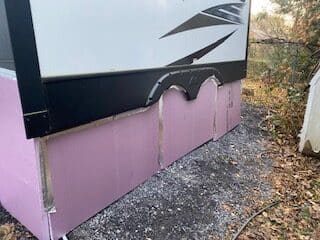
Airskirts: Is This The Best RV Skirting Solution Available?
Window, Vents, and Doors
The next thing to remember when prepping your RV for the winter is adding extra insulation to your windows and door(s). While most RVs have some insulation in the walls, the windows, vents, and doors do not. These are the weakest links to heat loss in your RV. Unlike conventional homes, which may have dual pane windows, RV windows are usually single-pane. Even higher-grade RV windows can’t compare to conventional house windows. Likewise, RV doors are much thinner than conventional steel or wooden doors in homes. And RV vents typically contain a thin piece of plastic protecting you from the elements. All three of these areas should be beefed up when living in an RV during the winter season.
Windows can be better insulated using two products: window shrink plastic and reflexit insulation. Together, these will significantly improve the efficiency of your windows. In addition, they’re both relatively inexpensive and will hold more heat inside the RV, saving you money in lower propane bills.
Modifying my RV for Winter Living
While doors are a little harder to insulate, you can purchase an RV door window cover. These use the same Reflectix material that was suggested for the windows. In addition, you can purchase a custom-fit cover that easily attaches to the door.
Insulating your roof vents is another good option. Doing this can make a huge difference in keeping heat inside your RV. Since warm air rises, vents become an easy place for your heated cabin air to escape. You can purchase RV vent insulation pillows, which fill the void in your vent and trap warm air in your RV. These are extremely easy to install and can be done in a few seconds.
The following articles provide information about insulating windows, doors, and vents.
10 Simple Steps to Lower Your RV Propane Use
Water and Freezing Pipes
Frozen water is one aspect of winter RV living that scares most campers. While you can always grab an extra blanket to stay warm, there isn’t always a quick solution to protect your water system. If your water freezes, it can be inconvenient but cause many expensive problems with your RV. If you plan to use water in your RV in freezing temperatures, you must take measures to prevent your water lines from freezing.
In an RV, there are two primary water elements to worry about: Your RV water hose and water lines installed in your RV. Luckily, protecting your RV water hose is relatively simple. You can purchase or build a heated RV water hose. These work exceptionally well and will keep the water flowing to your RV. Below is a great article describing how to build a DIY heated RV water hose. There are also some good suggestions for pre-build heated hoses if you’re not too handy.
DIY Heated RV Water Hose: Step-By-Step Guide
The more challenging task for dealing with frozen water is preventing your RV water pipes from freezing. Luckily, if you skirted your RV, you’re well on your way to doing this. Preventing your RV water pipes from freezing requires keeping the areas where your pipes run above freezing. In most RVs, this is under the floor, in an underbelly area.
In some RVs, the underbelly is heated. This is usually accomplished when your RV furnace exhausts hot air into the underbelly. For this reason, you need to run the furnace when temperatures are below freezing to prevent your pipes from freezing. Some RVs will also have heat pads for the fresh, grey, and black tanks. If you don’t have heat pads, you can add them. You can also add heat tape to your RV pipes, but this isn’t always necessary.
This can sometimes pose a challenge if you’re not using your furnace and relying on electric space heaters to heat the inside of the RV. If you’re doing this, then there is no way for hot air to get to the underbelly, and you may have a situation where your pipes can freeze.
So, if you have a heated underbelly and are worried about frozen pipes, you must periodically operate the furnace. If you rely on electric heat, one alternative is fabricating a system to pump warm cabin air to the underbelly. Below is an article that provides a simple solution for this, but you will need to install some components and cut a hole in the floor to your underbelly.
Don’t Let your RV Water Heater Freeze: A Costly Mistake
Additionally, if you don’t want to worry about a heated RV water hose, you can also choose to fill your freshwater tank and use your water pump to supply you with drinking water. This is a great way to tackle short-term freezing temperatures. However, if you choose this option, you will want to ensure that your RV underbelly is heated and that there isn’t a chance of your fresh water tank freezing.
If you are running your RV water heater, you typically don’t have anything to do with it. However, if you will not be using it, drain it, so it doesn’t freeze. It’s possible for en entire RV water heater to freeze solid if not heated.
Can you Heat your RV Underbelly with Electric Heat?
Staying Warm
Now that your RV is ready for winter, the next step is to take steps to stay warm and comfortable. Luckily, you have already accomplished much of this with the above steps for prepping your RV.
Staying warm inside your RV requires heat. You have two primary options for heating your RV: an RV propane furnace or an electric
Since RVs are typically small, they heat up relatively quickly. However, since RVs are typically poorly insulated, you can lose heat fast than in a traditional house. For this reason, adding extra insulation, as described above, is critical. If you are stationary, it’s also a good idea to consider getting a larger propane tank. The smaller 30lb propane tanks may last about a week if used regularly.
5 Best Electric Heaters for RVs: 2023
Heating your RV living space can also be expensive if you don’t properly insulate it, especially if you have a larger RV. The following article provides additional details on keeping the heat inside your RV, saving you money. Also, I usually suggest doing both when choosing between a propane heater and a small
RV Furnace Won’t Ignite: How to Fix Yourself

If you choose to use electricity, below is a great article that reviews some of the best electric space heaters on the market. My top suggestion is usually an oil-filled radiator-type heater, but the Vornado heater listed in the article is excellent too.
Dealing With Moisture
When living in an RV in the winter, moisture is one of the most significant issues you’ll face. While it can be an issue in warmer months, it’s typically less noticeable because your RV breathes more. In addition, your doors, windows, and vents typically allow air to circulate, removing moist indoor air and exhausting it outside.
In the winter, however, humidity levels in the RV increase. Most of this humid air comes from us. As we breathe, we exhale hot moist air. When we have a sealed-up RV, there is nowhere for it to go, and it can create moisture buildup on the walls, windows, closets, and under mattresses.
Best RV Dehumidifiers: Buying Guide (2023)
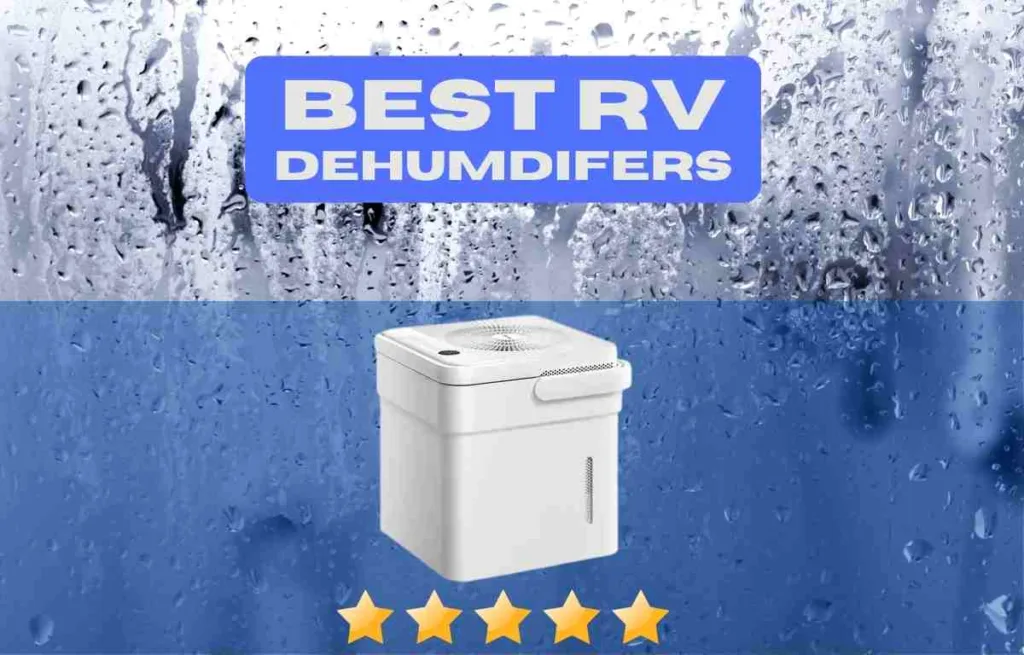
The best way to avoid moisture issues is to reduce the humid air in the RV. This is best accomplished by using a dehumidifier. The following article lists some of the best dehumidifiers for your RV. While you may be tempted to get a smaller one, rated for the size of your RV, my suggestion when using the RV in the winter weather is to get a larger one. Not only will you be emptying it less, but it will also pull much more moisture out of the air.
A dehumidifier may not entirely reduce moisture in these spaces if you have closed areas, like closets. For this reason, I suggest adding moisture-absorbing bags or containers, such as DryRid. These products can supplement your dehumidifier and help you tackle moisture problems throughout the RV.
Unfortunately, no matter how hard we try to reduce moisture in the RV, certain areas can become a problem. One very common place is under your RV mattress. Since most RV beds have mattresses sitting directly on plywood, there is no air circulation underneath them. As a result, this area is very prone to collecting moisture, which can lead to mold.
Prevent Moisture Under your RV Mattress: (Easy DIY solutions)
The best defense against mattress moisture is to provide air circulation. Below is a detailed article on how to avoid this problem and lists some products and DIY solutions to aid you in your efforts.
Camping in Warm Areas When It Gets Colds
People living or camping in their RV in traditionally warm places may get worried when cold temperatures are in the forecast. Most folks are ready for these situations if you’re camping in the Northeast. However, in places like Florida or Texas, where many relocate to avoid these issues when they arise, it can cause a bit of panic. Do you need to worry about frozen pipes? What if you can’t skirt your RV? What is the best way to stay warm? All of these questions are things many RVers ask when they find themselves in this situation. Below is a great article that will help you determine what steps to take and what you can avoid. The good news about freezing temperatures in typically warm weather areas is that it’s usually short-lived, and most times, you only need to worry about cold nights. Sometimes, adding foam pipe insulation to your RV water hose will be all you need.
Below freezing weather in Florida: What should you do?
Conclusion
Reviewing the tips above and listed in the articles, you will be well on your way to a comfortable and safe winter camping season. Some of the tips, like purchasing a heated hose, are simple. Others will take a little more time and effort. However, if camping during the winter or living in your RV full time, the best bet it to take precautions and add some extra protection to protect yourself and the RV. Start by focusing on the most important things, keep an eye on the weather forecast and outside temperatures, and take the necessary precautions. Winter RV camping can be challenging, but it can also be a lot of fun.

